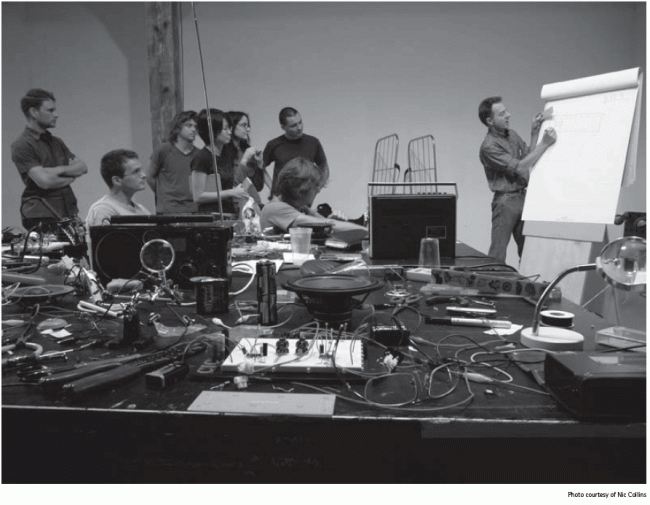Nic Collins has had a long and influential career working on the fringes of the electronic music world, but this month’s release of the second edition of his book Handmade Electronic Music marks yet another step down the academic rabbit hole. In anticipation of its release, Collins sat down to talk to F Newsmagazine about techno-nostalgia, the popularity of programming and the technological niche in music that his book fills.
Handmade Electronic Music teaches aspiring hardware hackers, in a straightforward, step-by-step manner, how to build from scratch the most essential tools for creating physical electronic music. The book teaches the reader to crack open toys, the basics of soldering and how to build and bend circuits. It also serves as a history lesson, outlining the major figures in this particular strain of avant-garde music.
So why, only three years after its original publication, is a second version being released? Collins isn’t completely sure. He assumes it has a lot to do with the popular reception of the work: “What happened with the first edition kind of surprised the publisher, I think. A lot of people started buying it, and a lot of people started using it. There were universities that started designing courses around it, which is kind of frightening. Now it’s being used in colleges almost all over the world.”
Collins also credits the last decade’s increasing nostalgia for old technology as a context for the popularity of his book. “You’ve always had music reviving older forms, like punk and hardcore reviving early rock and roll, but house was a very technically oriented music, that went back to very specific pieces of technology. House was very much about certain midi sequencers and drum machines, and subsequent genres, like techno, referenced back to things like analog synthesizers.”
But what makes the book unique, according to Collins, is that he goes beyond the DIY circuit bending instructions that can be found on the Internet, which depend on hacking toys. Instead, he instructs readers how to build from scratch, using a “Lego approach to circuitry, where you just have something like four different bricks, and then you’d have to put everything together yourself.” These components can be switched around to create oscillators or a fuzzbox. “It was very goofy. The technology is extremely nonstandard, but very cheap, and indestructible, and it runs forever on a nine volt battery.”
This distinction is important, since many toys that are now being made are harder to hack. Meaning, that toys from the late ’80s and early ’90s have to be found and purchased in order to create circuit benders the traditional way. At the time the first edition was released, “no one had any experience doing it unless there were a geeky, I-made-a-synthesizer-out-of-a-kit sort of guy. Now it seems as though it has become a much more fluid part of a lot of people’s art practice. In other words, just like there was a little break between people who used a synthesizer and those who programmed, now everybody’s programming.”
Collins will be at Quimby’s Book Store (1854 W North Ave) on May 2 to promote the release. The new edition includes a DVD with 87 videos. Including the audio components from the first edition as well, the book covers over 100 artists.










A very interesting read..